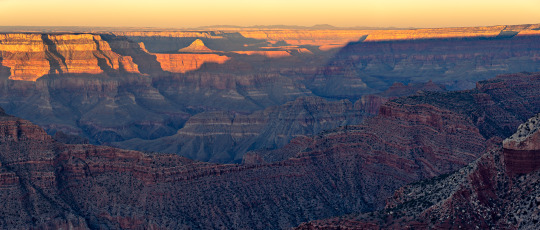Compositional Limits
March 17th, 2020Sometimes I find myself overly constrained by the frame around the image I’m shooting. Of course the image framing imposed by the camera is always a constraint but here I’m saying overly constrained because I find that sometimes it doesn’t allow me to capture the full scope of my vision. I most often encounter this constraint in landscape photography by it occasionally occurs in other genres as well.
What to do? There are at least two approaches to the problem: use a wide-angle lens or stitching.
Let’s consider the choice of lens first. My standard lens, the one that’s mounted on my camera most frequently, is a normal range zoom lens (24-70mm). Since I am shooting with a full-frame sensor (24mm x 36mm) setting the lens at 50mm results in a field of view of 27° x 40°. Zooming the lens out to 24mm expands that field of view to 53° x 74° which opens the possibilities of what I can capture but can still be very limiting.
Standing on the rim of the Grand Canyon with a horizontal view that literally extends 270° and only having a 24mm lens can be disheartening. How can you capture the grandeur without capturing the grand view? I could switch to a wider angle, for example my 16mm lens, but that still only expands the view to just over 90°.
Furthermore, using a wide angle lens distorts the relationship between near and far objects, emphasizing (or enlarging) objects close to the lens and shrinking (or deemphasizing) objects farther away. In my opinion this effect in some situations can result in artistically pleasing images but when employed in grand-view landscapes I find the results unappealing. I think the reason for this is that the diminution of far objects and overall scene distortion results in an image that is less impactful than the actual scene. The scene as experienced when standing at the view point, under a normal perspective, is more present and in-your-face than the result from a using wide angle lens. In my images I want to capture that feeling of being-there and the presence of the actual scene as much as possible.
Another consideration is usable bits.
My primary landscape camera is a Sony α7RII with an image size of 42MB. This camera shoots in a ratio of 2x3 and results in an image of about 5300 x 7950 pixels.
Many of the grand-view images that I shoot I plan on cropping to a long horizontal aspect ration suitable for hanging on a big wall over a couch or some such location. A common crop ration that I use for these wide panorama is one frequently used in movies: 1x2.35.
Taking an image with my 16mm lens might capture a significant portion of the scene and provide a pleasing composition; however once cropped the final pixel count is significantly reduced and results in an image that is unsuitable for massive printing. For example, cropping a 2x3 image to 1x2.35 results in a loss of almost half the original data. The resulting image is 3383 x 7950 pixels, or only 23MB. Assuming a print resolution of 300dpi, the final image would natively be printed at 26.5″ wide. If my goal is to print a very large image (greater than 5 feet), starting with an image that is barely over 2 feet isn’t going to produce superior results.
One way to overcome these limitations is through image stitching, which I’ll discuss in my next post.

(From Sublime to Grand, Sony α7RII, FE 24x70mm @ 70mm, 1/200s, f/6.3, ISO 400, Image Size: 15148 x 6446)
